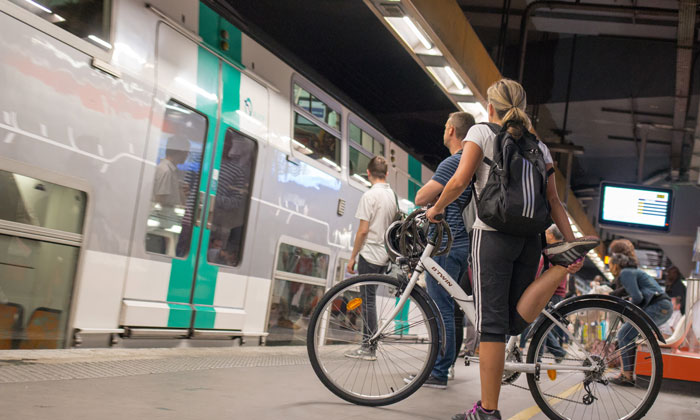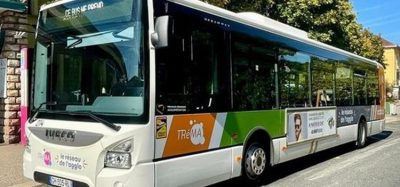Seamless travel: the challenges to true intermodal MaaS
- Like
- Digg
- Del
- Tumblr
- VKontakte
- Buffer
- Love This
- Odnoklassniki
- Meneame
- Blogger
- Amazon
- Yahoo Mail
- Gmail
- AOL
- Newsvine
- HackerNews
- Evernote
- MySpace
- Mail.ru
- Viadeo
- Line
- Comments
- Yummly
- SMS
- Viber
- Telegram
- Subscribe
- Skype
- Facebook Messenger
- Kakao
- LiveJournal
- Yammer
- Edgar
- Fintel
- Mix
- Instapaper
- Copy Link
Posted: 28 March 2018 | Alex Froom - Zipabout | No comments yet
Alex Froom, Director of Zipabout, discusses how Mobility-as-a-Service (MaaS) has the potential to drive a total behavioural shift from an over-reliance on the private car to widespread use of more sustainable transport initiatives. However, there are challenges within doing so and both public and private transport need to work together to overcome these.


In its very simplest form, MaaS has the potential to make any journey effortless and put the passenger firmly in control.
Passengers increasingly demand the same efficient, connected experience when travelling as they now have in almost every other aspect of daily life: a seamless journey from A to B. MaaS should in theory be able to deliver this. It promises the solution to the two key necessities of seamless travel: intermodality and a supply/demand match up.
The data to understand the passenger, and the technology to join up many currently disparate sources, already exists
Journeys rarely involve one sole mode of transport – a trip rarely starts or finishes, for example, at a train station or bus stop – so a seamless journey relies on a fully integrated intermodal approach between all transport services. It also needs to provide the best option for any individual passenger to get from A to B as quickly and as comfortably as possible. This means it relies on supply being efficiently calibrated to demand, with the individual passenger’s needs at its very heart.
It is by no means an easy feat to achieve. Despite many heralded ‘innovations’, real-life successful MaaS initiatives are few and far between and there is certainly no tangible example of the ideal seamless journey. One thing is immediately clear from many of the so-called MaaS innovations that we’re seeing globally: MaaS and intermodality cannot simply be reduced to a smart ticketing opportunity aimed at the city commuter with money to spend. Being able to pay for your tickets across multiple modes of transport with one app does not give you seamless travel – that is simply a useful way of reducing the friction during one aspect of the journey.
True MaaS requires significant innovation in the very systems that underpin our existing transportation infrastructure. It requires, among other things, data-sharing and commercial collaboration, a 360⁰ understanding of passenger behaviour and demand, a vision to look beyond urban centres and sophisticated technology to bind everything together.
Demand-responsive travel is not the creation of countless personalised bus routes tailored to each individual – this is clearly unrealistic and unachievable on anything other than a small and expensive scale.
Let’s first look at the requirement to match supply to passenger demand. The technology here is often not the main problem. Uber, for example, is so often hailed as the vanguard of the demand-responsive tech sector and has made much noise about its desire to take a piece of the public transport pie with so-called on-demand bus routes in London. But demand-responsive travel is not the creation of countless personalised bus routes tailored to each individual – this is clearly unrealistic and unachievable on anything other than a small and expensive scale.
If private companies are allowed to enter the public transport sector, and cherry-pick the routes and transport modes that deliver the most profit, we run the risk of creating a two-tier social divide: a form of intelligent mobility for those in urban centres who can afford to integrate their Uber with their train fare, and a much reduced service for rural and vulnerable passengers who rely on local services and community transport initiatives to keep them connected. Private companies are, after all, beholden first and foremost to their shareholders, not passengers and certainly not those outside of big cities.
It is a challenge to persuade transport providers, both public and private, to understand that there is a social as well as commercial benefit from sharing demand and integrating with each other. By operating independently and maintaining a siloed approach to sharing information, the transport industry cannot accurately understand a passenger’s demands and transport needs. And by not understanding the passenger, it is impossible to provide them with the seamless travel experience they require or the level of personalised customer service they have come to expect, thanks to giants such as Amazon.
True MaaS requires significant innovation in the very systems that underpin our existing transportation infrastructure.
The data to understand the passenger, and the technology to join up many currently disparate sources, already exists. The Zipabout platform, for example, processes more than 35 million journeys each month through a number of transport partners and can identify unfulfilled passenger demand. This kind of technology can also enable any operator to communicate directly with any passenger, opening up the possibility of one-to-one customer service, incentive and loyalty schemes, compensation offers and the like.
This technology needs to be opened up to the whole market and offered as a service to encourage regional and local schemes that don’t have access to millions of pounds. No single operator can deliver this without significant funding and where that investment exists, it is so often delivered in yet another privately-funded silo. It is now time for the transport industry to come together in a more cohesive approach and unlock the full potential of MaaS for the benefit of the passenger.
Biography


Related topics
Multimodality, Passenger Experience
Related organisations
Zipabout
Related people
Alex Froom








